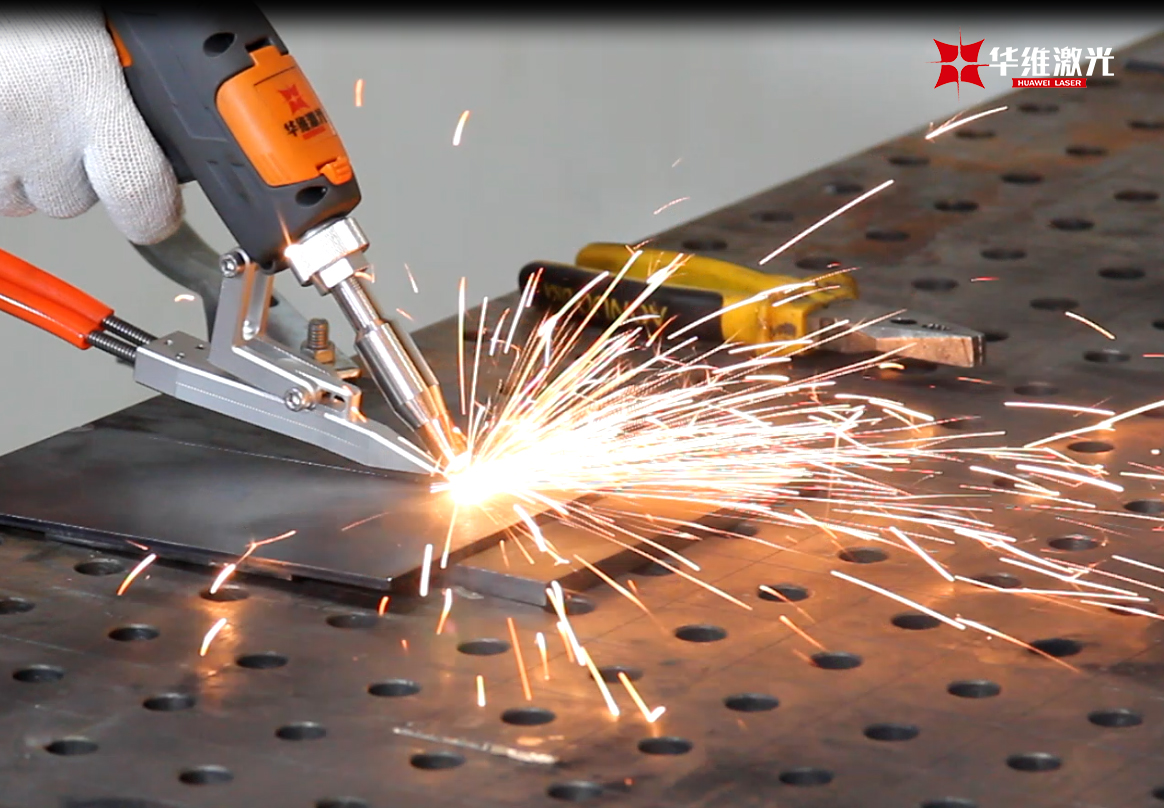
- English
- Español
- Português
- русский
- Français
- 日本語
- Deutsch
- tiếng Việt
- Italiano
- Nederlands
- ภาษาไทย
- Polski
- 한국어
- Svenska
- magyar
- Malay
- বাংলা ভাষার
- Dansk
- Suomi
- हिन्दी
- Pilipino
- Türkçe
- Gaeilge
- العربية
- Indonesia
- Norsk
- تمل
- český
- ελληνικά
- український
- Javanese
- فارسی
- தமிழ்
- తెలుగు
- नेपाली
- Burmese
- български
- ລາວ
- Latine
- Қазақша
- Euskal
- Azərbaycan
- Slovenský jazyk
- Македонски
- Lietuvos
- Eesti Keel
- Română
- Slovenski
- मराठी
- Srpski језик
Embracing the 5G Revolution: Huawei Laser is Ready for the Future!
2024-12-26
In the era of booming Industry 4.0, the integration of 5G network and handheld laser welding has become a key force for change in the manufacturing industry. Huawei Laser, as an outstanding representative of the laser industry, has been deeply involved in the professional research and development and application of laser equipment for many years, and has accumulated profound technical accumulation and rich practical experience. With its strong scientific research strength, it is the first to integrate the low latency and high bandwidth advantages of 5G network into handheld laser welding machine, realizing precise remote control of the welding process, greatly improving welding efficiency and quality, adding strong impetus to the rapid development of intelligent manufacturing, and leading the entire industry to steadily move towards new heights.

5G technology empowers laser
5G technology achieves the ultra-high speed, low latency and a large number of connections, providing technical support for remote operation, real-time monitoring and data transmission of laser welding equipment. Laser welding is a process with extremely high requirements for precision and control. Although traditional laser welding equipment can achieve rotating welding, it often relies on manual intervention and has monitoring in remote and real-time data transmission. The low latency and high bandwidth characteristics of 5G solve this problem.
Through the 5G network, laser welding equipment can achieve remote operation and real-time data transmission to ensure that all parameters in the welding process are accurately controlled. Through the 5G network, welding operators can monitor the status of the production line through mobile devices at any time and any place, and remotely adjust the welding process. This not only effectively reduces the downtime of equipment failure, but also optimizes production parameters based on real-time data, improving production efficiency and welding quality.
IoT promotes equipment standardization
The application of IoT technology in laser welding is mainly reflected in the intelligent perception, automatic adjustment and fault warning of equipment. By connecting smart devices such as sensors and cameras to laser welding machines, the IoT system can monitor key parameters such as temperature, pressure, speed, etc. during the welding process in real time. Through data collection and analysis, the system can automatically adjust welding parameters to ensure the stability and consistency of the welding process.
For example, the temperature sensor in the laser welding equipment can monitor the temperature changes in the welding area, while the sensor can capture the material deformation during welding in real time. When the system detects any abnormality, the IoT platform will immediately alert the operator and prompt the operator. The automated monitoring system can not only reduce human operating errors, but also reduce equipment failure rates and extend the service life of the equipment.
Big data and cloud computing: improving welding quality and efficiency
5G and IoT technologies provide massive data support for laser welding systems, and the combination of big data and cloud computing enables these data to be better stored, processed and analyzed. By analyzing a large amount of welding data, manufacturers can identify potential problems and take measures in advance to perform predictive maintenance and reduce accidents and production interruptions.
For example, through the cloud platform, companies can integrate and analyze welding data from different production lines around the world and develop more scientific optimization plans. Through retrospective analysis of historical data, companies can quickly identify which operating parameters can best improve production efficiency and which welding modes can ensure welding quality optimization. Data-driven decision-making not only improves welding quality, but also enables accurate production scheduling, further improving production capacity and efficiency.
Achieve full-process digitalization and customized management
The combination of 5G and the Internet of Things enables laser welding equipment to be encapsulated in a customized management system for the entire production line, forming a highly coordinated and automated production environment. Data such as equipment status, production progress, and quality control can be uploaded to the cloud in real time, and managers can centrally monitor and make decisions through the intelligent platform. Full-process digital management not only improves production efficiency, but also effectively reduces the risks caused by human intervention.
In addition, the deep integration of laser welding equipment and the Internet of Things system makes data exchange in the production process smoother and the collaboration between equipment closer. This intelligently enhanced interconnected production mode greatly improves the flexibility and flexibility of the production line, enabling enterprises to quickly adjust production plans according to market demand and achieve efficient and bright production goals.
Future Outlook: A New Era of Laser Welding Processing
With the continuous maturity of 5G and IoT technologies, laser welding will enter a new era of customization. Enterprises can not only achieve real-time monitoring and remote management during the production process, but also achieve accurate predictive maintenance and production optimization through data analysis. This series of technological innovations will not only promote the innovation of laser welding technology, but also lead the efficient manufacturing industry to a more intelligent and green direction.
In the future, laser welding equipment will be more automated and automated, and can self-regulate, self-optimize, and even self-repair. With the popularization of 5G and IoT technologies, the manufacturing industry will truly usher in a new era of "digital factories". Laser welding will play an important role in this process and become one of the key technologies to promote the transformation and upgrading of the manufacturing industry.




